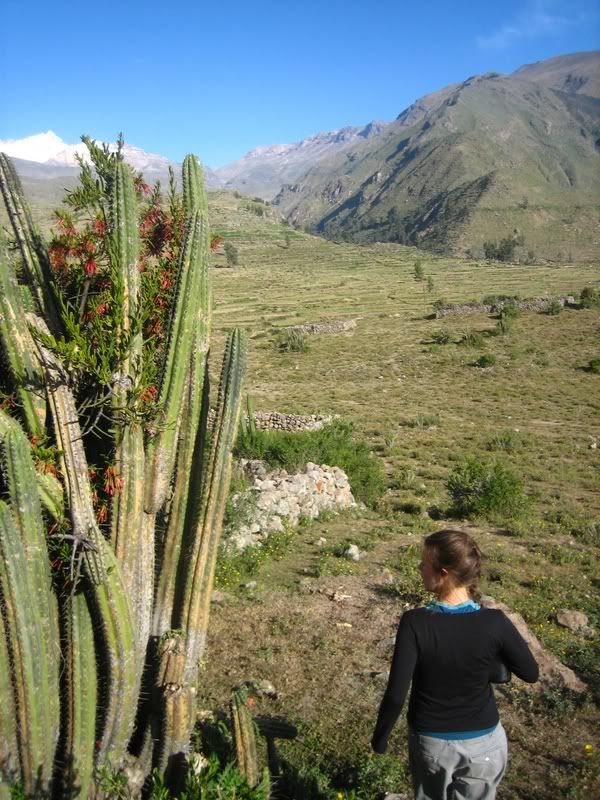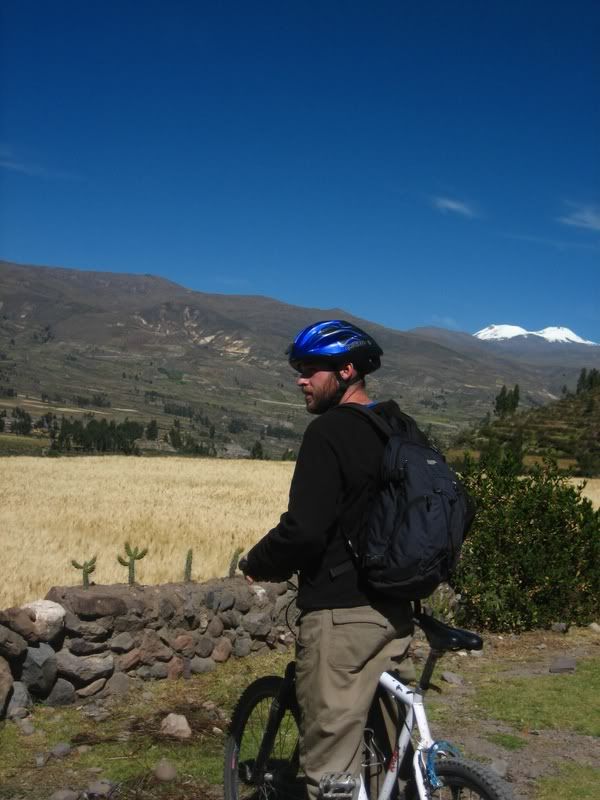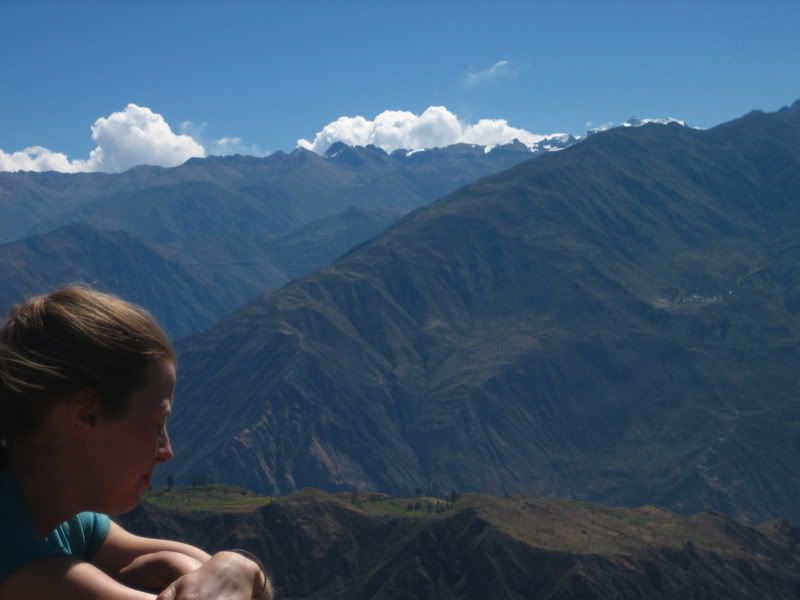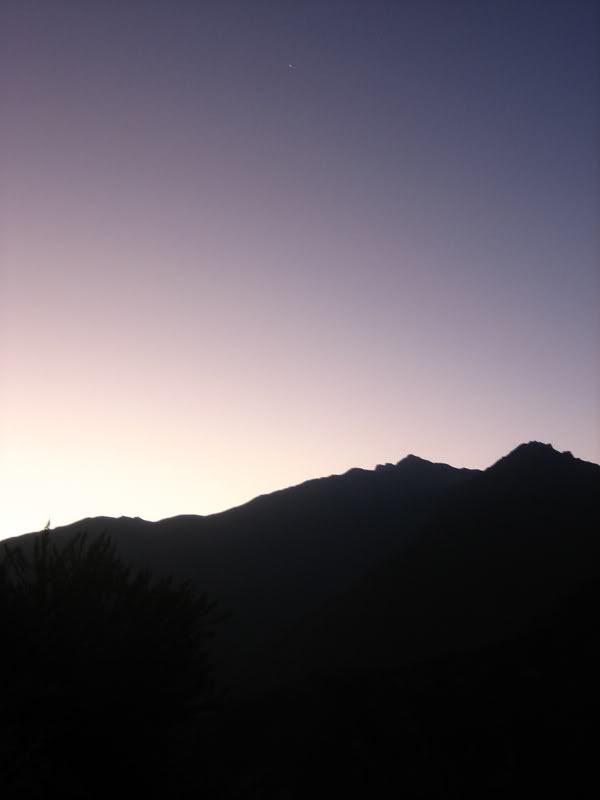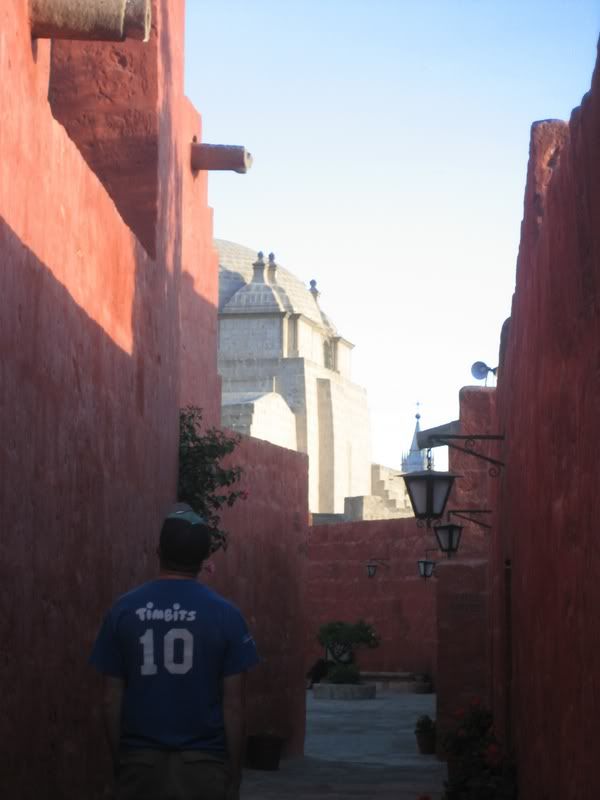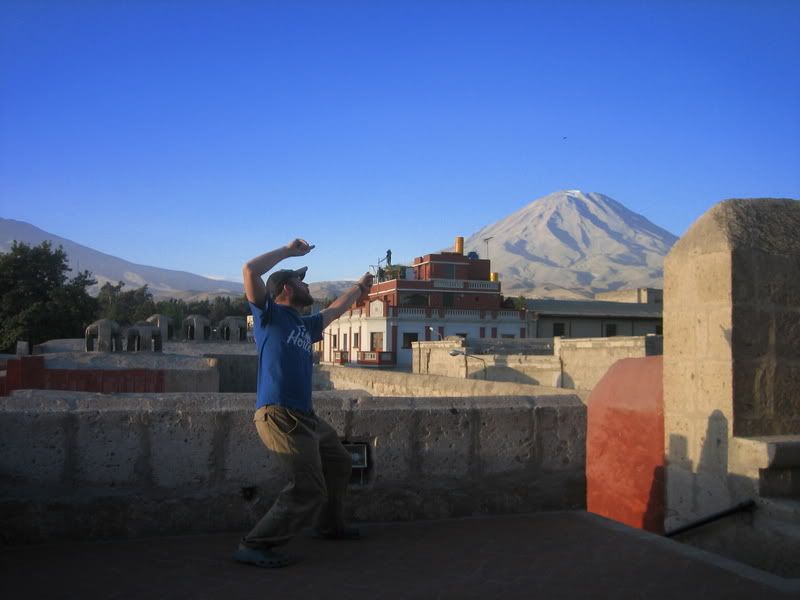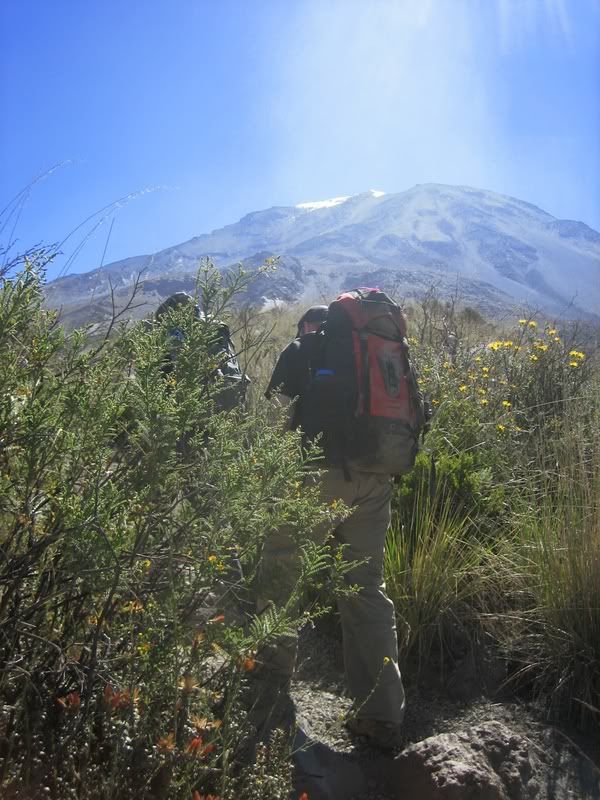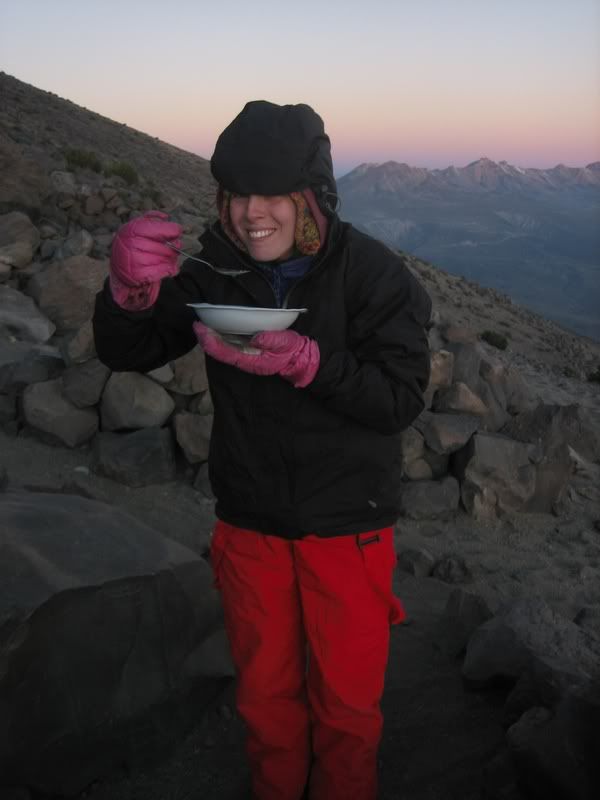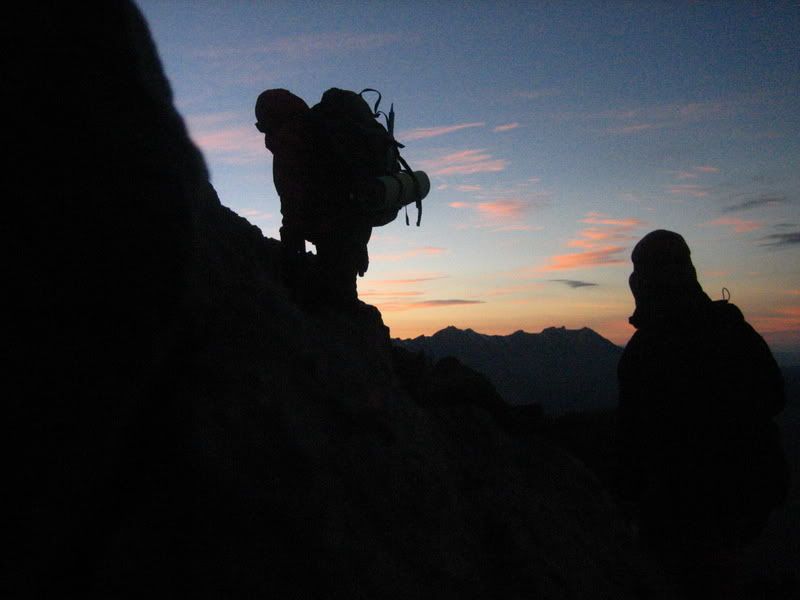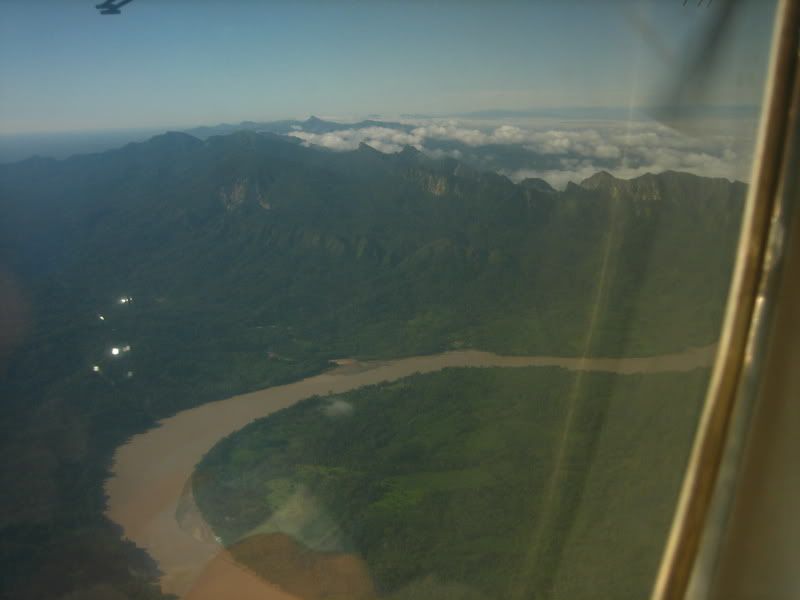 Well this past week has been pretty ordinary, nothing too special. We only walked in petrified dinosaur tracks, crawled 2 hours in the dark through a cave, bathed in the cool canyon river waters, and ate tuna that had more in common with catfood than real tuna. Pretty normal huh?
Well this past week has been pretty ordinary, nothing too special. We only walked in petrified dinosaur tracks, crawled 2 hours in the dark through a cave, bathed in the cool canyon river waters, and ate tuna that had more in common with catfood than real tuna. Pretty normal huh?
We caught a flight from Rurrenabaque, rather than brave (or suffer) the two day bus trip to where we wanted to go. Rurrenabaque has a grass landing strip, so we caught the first plane we could rather than risk getting stuck if it rained. The flight was only 35 minutes, but climbed from 200m up reaaallly high in the mountains. We then caught a night bus from La Paz to Cochabamba, and then another bus to Torotoro, also known as The Land Before Time... well not really.
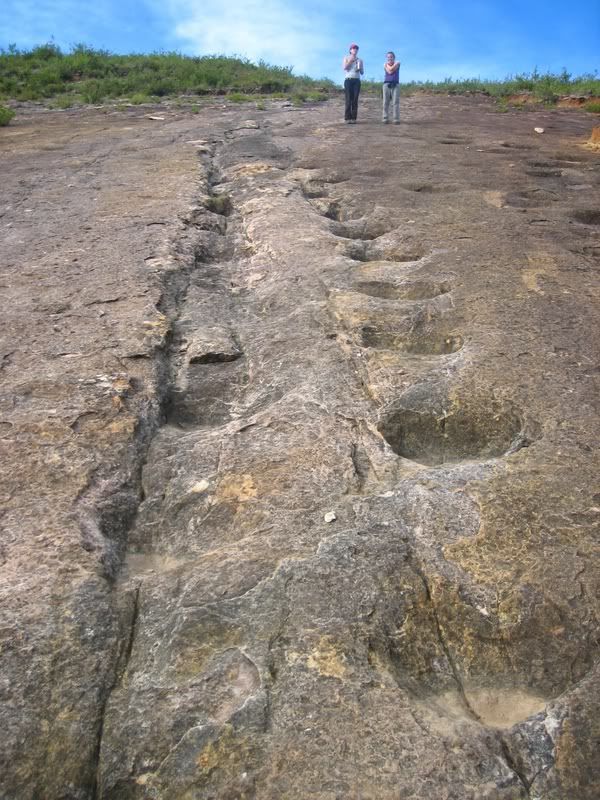 Torotoro, from what we managed to translate from our guide, means Mud Mud, and for good reason. The area is incredibly rich with geological history and coolness. Long ago there was either a mud flat, or swamp or something similar that lots of dinosaurs ran around in. Shortly after "leaving only their footsteps", the mud was covered in lava, or other sediments and solidified, preserving their steps forever!
Torotoro, from what we managed to translate from our guide, means Mud Mud, and for good reason. The area is incredibly rich with geological history and coolness. Long ago there was either a mud flat, or swamp or something similar that lots of dinosaurs ran around in. Shortly after "leaving only their footsteps", the mud was covered in lava, or other sediments and solidified, preserving their steps forever!
We joined up with another Aussie couple for the three days of fun. It was really amazing actually seeing tracks through solid rock. Almost as if they walked by yesterday. There were two Israeli girls that were not convinced at all, thinking it natural or some sort of hoax or something. To me the evidence was pretty conclusive, or concrete... set in stone even.
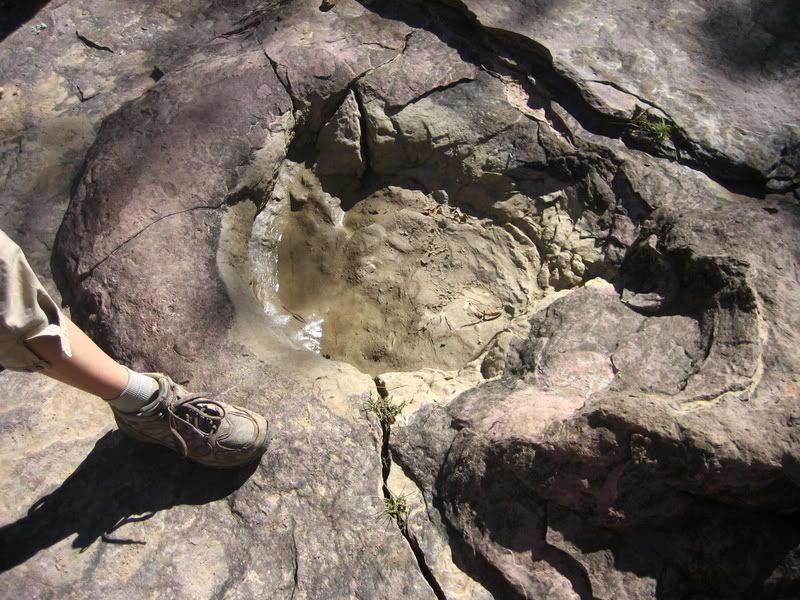 Near the town of Torotoro is a cave that has been carved out over time by a river, so we spent the day spelunking. Emilio, our 17 year old guide expertly showed us the way through. The cave was HUUUGE in parts, with some amazing stalactites, and stalagmites and completed columns. Unfortunately before the park was in place to regulate visitors, many people came to the cave and broke off most of the stalactites as souvenirs, leaving any within reach as stumps. Some have already started growing back, but given that it's only a millimetre per drop of water, and they could have one drop per day, or per year... it will take some time before it's even close to normal again. We forgot our camera that day, so you can just close your eyes, and that's basically what the cave looked like. Dark... Parts were pretty tight, requiring basic knowledge of yoga and a willingness to get dirty.
Near the town of Torotoro is a cave that has been carved out over time by a river, so we spent the day spelunking. Emilio, our 17 year old guide expertly showed us the way through. The cave was HUUUGE in parts, with some amazing stalactites, and stalagmites and completed columns. Unfortunately before the park was in place to regulate visitors, many people came to the cave and broke off most of the stalactites as souvenirs, leaving any within reach as stumps. Some have already started growing back, but given that it's only a millimetre per drop of water, and they could have one drop per day, or per year... it will take some time before it's even close to normal again. We forgot our camera that day, so you can just close your eyes, and that's basically what the cave looked like. Dark... Parts were pretty tight, requiring basic knowledge of yoga and a willingness to get dirty.
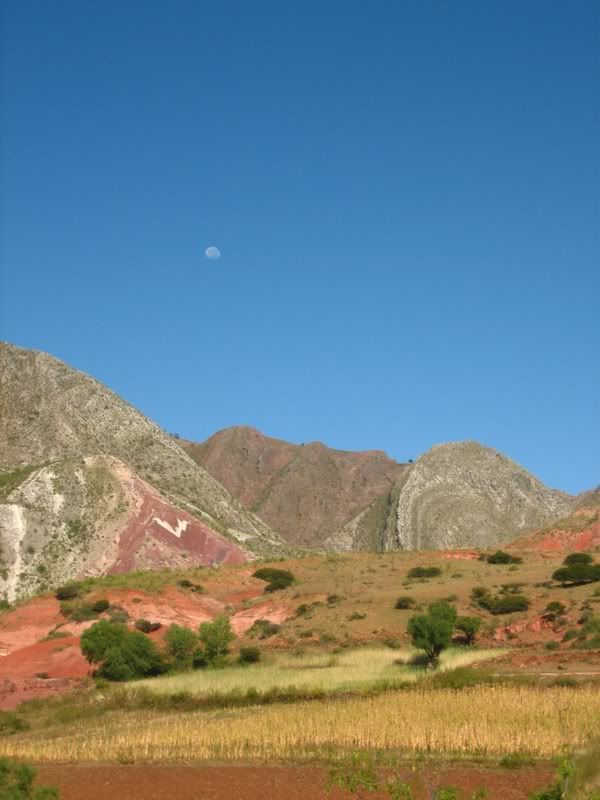 The area is mostly defined geologically by sedimentary rocks, with a bit of volcanic activity, so the rivers that flow have carved out a gigantic canyon. We hiked down a dry river towards it, walking along natural bridges of rocks, and seeing some more dino tracks, before descending the 1500 or so steps to the bottom. Beautifully carved river bed was there to greet us as well as a pristine waterfall where we took some time during the heat of the day to swim.
The area is mostly defined geologically by sedimentary rocks, with a bit of volcanic activity, so the rivers that flow have carved out a gigantic canyon. We hiked down a dry river towards it, walking along natural bridges of rocks, and seeing some more dino tracks, before descending the 1500 or so steps to the bottom. Beautifully carved river bed was there to greet us as well as a pristine waterfall where we took some time during the heat of the day to swim.
After more hiking, swimming, ancient Inca pictographs, we sadly caught the 6 am bus this morning back to Cochabamba. Torotoro was devoid of running water for some reason, so we can't wait for tomorrow when we get to La Paz for a nice shower.
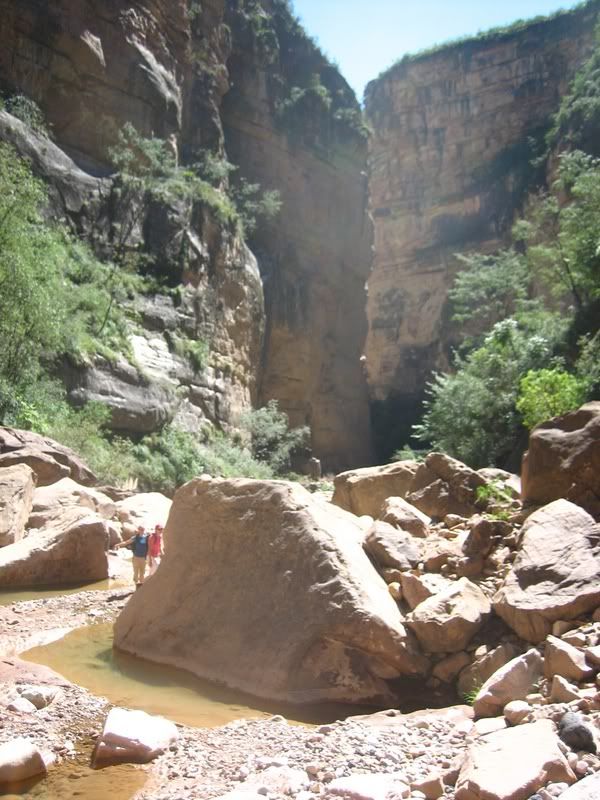 Some of you may have noticed we changed the title awhile back, adding the "near". We almost made it to the town of Santa Cruz, and actually did float down the border to the province of Santa Cruz, so that's gonna have to be good enough. As for us, we're on our way back north officially, a few days left in Bolivia, and in the south of Peru before getting back to Ecuador. 3 weeks tomorrow...
Some of you may have noticed we changed the title awhile back, adding the "near". We almost made it to the town of Santa Cruz, and actually did float down the border to the province of Santa Cruz, so that's gonna have to be good enough. As for us, we're on our way back north officially, a few days left in Bolivia, and in the south of Peru before getting back to Ecuador. 3 weeks tomorrow...
See all of you soon!
